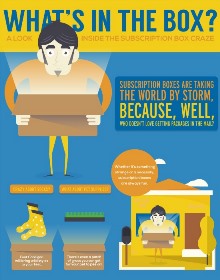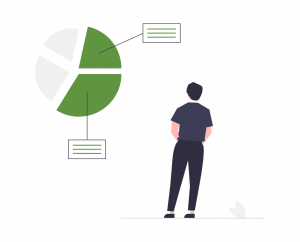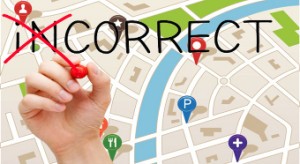
When it comes to prospecting and sending cold outbound email, sales enablement content is your best friend. Targeted collateral sets your cold outbound email apart by showing that you understand your prospects and what type of content matters to them.
Sales enablement content is so important for the buying journey that your sales and marketing teams should be thinking about your buyer personas and the different types of targeted content to support prospects throughout their buying journey before you build your first lead list.
By aligning sales and marketing, your prospecting and cold outbound email strategy is targeted around the messaging you plan to share with these prospects. This alignment forces your efforts to be strategic.
Why is sales enablement content so important for cold outbound B2B email?
Prospecting and reaching out to cold prospects is tough. While it’s no longer 1995 where everyone is terrified of talking to strangers online, people are still weary of receiving emails from people they don’t know.
Sharing sales enablement content in your cold outbound email campaigns builds trust. Sending targeted blog posts, case studies, and testimonials show prospects that you are legitimate, that you understand their pain points, and that you can provide value. Salespeople and marketers alike have the responsibility of educating prospects at the top of the sales funnel, resulting in more engaged and qualified prospects.
Today’s B2B buyer completes 57% of their buying journey before the sales rep is even engaged. Additionally, Consumers are anywhere from 66-90% through the buying process before they speak to a vendor or sales person.
That’s a whole lot of missed opportunity if you’re not educating buyers in the top of your funnel. Buying behavior has evolved so that consumers are more likely to spend time researching, educating, and servicing themselves prior to engaging with sales – salespeople should evolve as well.
This is especially true if cold prospects aren’t responding to your first or second outbound email. Here at LeadFuze, a typical cold email looks something like this:

The goal of the first email should be to create the impression that your outreach is a 1-off personal email. If your first or second email goes without a response, this is a huge red flag that (1) the prospect recognized they don’t know you (2) the prospect doesn’t trust you or (3) the prospect doesn’t identify with your messaging.
The third email in your outbound campaign is a great time to prove that while the prospect might not know you, that you do know something important about them. You can do this by sharing a blog post that resonates with their experiences. For example, if you’re sending emails to HR managers about their document solutions including a blog post about common HR paperwork mistakes and how to avoid them will show that you understand what’s important to them specifically.
In today’s digital world, by the time a sales rep gets involved with a prospect, the prospect already has an opinion about your company, your product, and maybe even you personally as a salesperson. Consumers are education-hungry and most people don’t want to be sold, as much as they want to make a smart decision for themselves. Luckily, by sharing sales enablement content throughout the buying journey you can shape and reshape buyer perspectives as they evolve through your sales process.
Touching base sooner and with more relevant content earns more closed deals than waiting until your prospects are further down the sales funnel to start shaping their perspectives.
Benefits of sales enablement content in your campaign include:
- Showing that your messaging is catered specifically to your prospects
- Building trust and credibility
- Establishing you and your company as thought leaders
- Sharing a story and creating an emotional alternative to the status quo
- Addressing common objections or the competition
Understanding Buyer Personas and the Buying Journey

Understanding your buyer and their journey is key to selling your product or services. From educating customers and building trust at the top of the funnel to handling objections and sharing success stories in the bottom of the funnel to nurturing and continuing education with existing customers – sales enablement content is a crucial part of any sales strategy.
When you’re ready to incorporate content to you sales strategy, a great place to start is with content mapping. The process will be unique to your specific company and buyer personas. HubSpot’s Corey Wainwright has a few great strategies for getting started here. He recommends you ask yourself the following four questions when you’re creating content mapping strategy:
1. What are the logical pathways to take a lead from awareness to evaluation to purchase?
2. What specific content assets can be deployed along those pathways to help advance leads to the next stage in the buying cycle?
3. What content assets are you missing?
4. How do you need to adjust the messaging in those content assets to align with the persona to whom you’re speaking?
Understanding the unique sales processes for different buyers and working backward to produce sales enablement content helps to be sure your content is delivered to the right buyers at the right time.
Best Practices for Sales Enablement Content
Don’t make the mistake of thinking you’ve found a ‘silver bullet’ solution with sales enablement content for cold outbound B2B email. You should be constantly reinventing and improving your strategy and content over time and based on your campaign’s performance. Below are a few strategies to keep in mind:
Access Gaps in your Content Strategy
What part of the buyer’s journey is lacking content? What are the frequent objections your sales team is hearing and how can marketing produce content that addresses those objections?
Re-Use Content
Are you measuring the success of your content and re-using your most valuable content or formats?
Make Collateral Accessible
The American Marketing Association discovered that 90% of marketing materials go unused by sales reps. Using sales enablement software and providing reps with easy access to these materials is key to their success.
Leverage Content Analytics
Identifying successful content is easy when you have analytics to back up the success and failure of different content strategies. When sales reps have access to content engagement analytics, they can more effectively understand a buyer’s journey and the context of the buyer’s perspective.
(81)
Report Post






